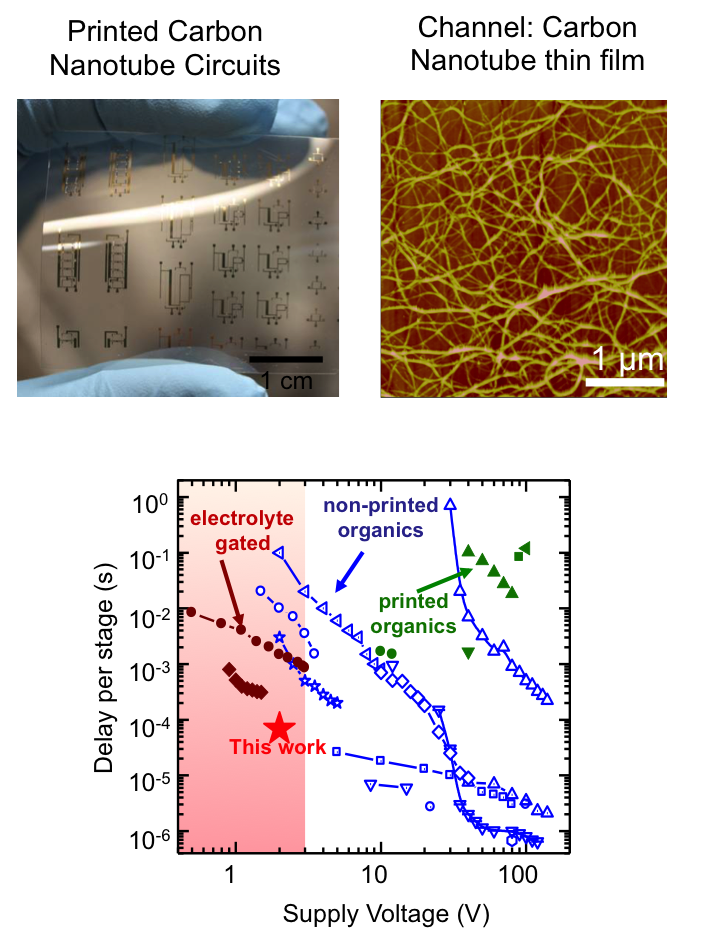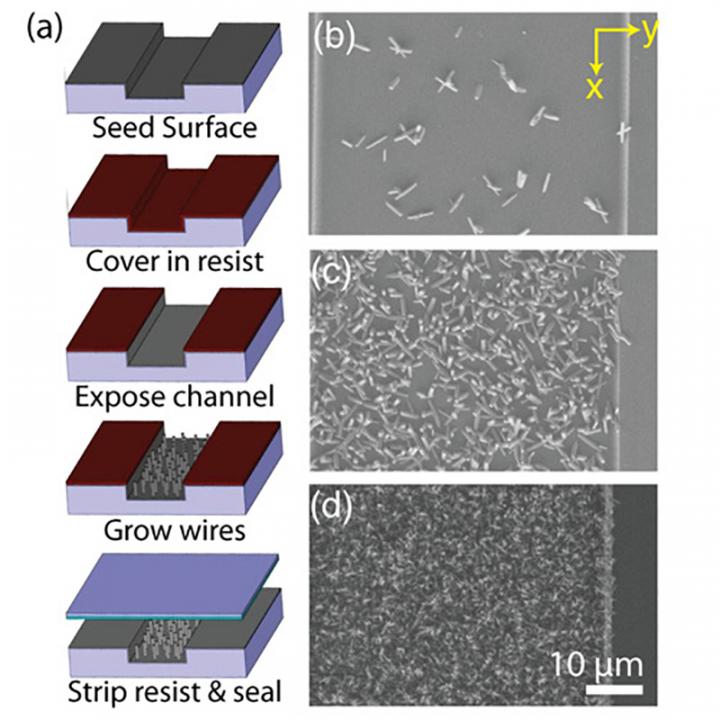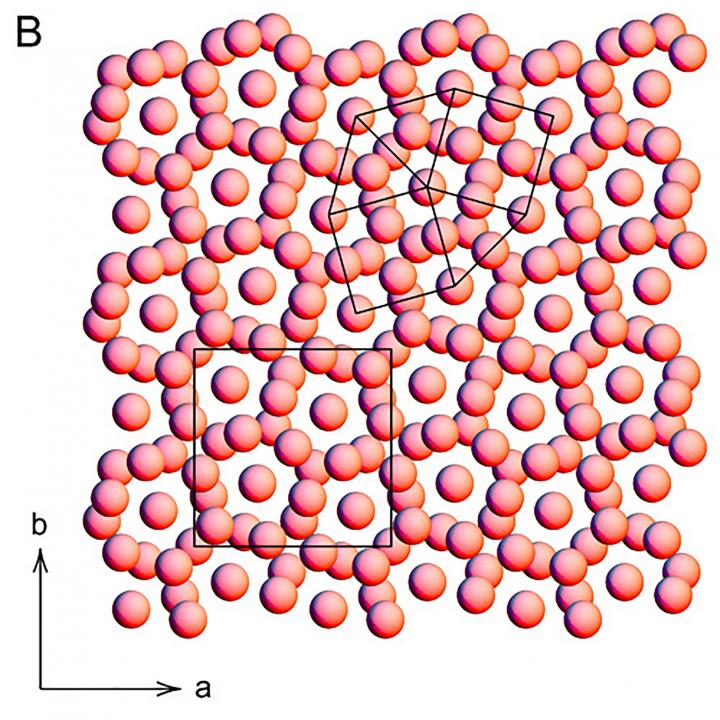We have demonstrated the first ever hybrid polymer film of an insoluble polymer with an acid (top picture).
We have demonstrated the first ever hybrid polymer film of an insoluble polymer with an acid (top picture).

Graduate student Mingjing Ha working with Optomec, Inc. and Northwestern University collaborators (Mark Hersam) has demonstrated low voltage, fast carbon nanotube (CNT) circuits printed on flexible plastic substrates. The circuits are fabricated by aerosol jet printing from a liquid dielectric ink (ion gel) and a purified semiconducting CNT ink (Northwestern).

Our team has developed a simple solution-based method to fabricate arrays of ZnO nanowires inside of a glass microchannel.

Ordering of spherical particles represents a fundamental topic in materials science and engineering ranging from the sub-nanometer scale packing of atoms in simple crystals to micron sized assemblies of colloids.
Electrically charged polymer colloids attracted to the surface of water droplets of different shapes crystallize on their curved surfaces.
Following up on their recent creation of light-sensitive fibers, Professors Yoel Fink and Joannopoulos and their research teams have developed fibers that can detect ("hear") and produce sound ("sing").
Background: Most organic devices, from organic light emitting diodes to organic spintronic devices vertical devices, where the essential interfaces are buried and thus not subject to investigation.
1 The Martin Fisher School of Physics, Brandeis University 2 Department of Physics, Brown University